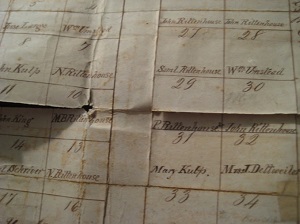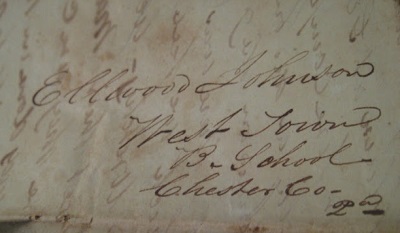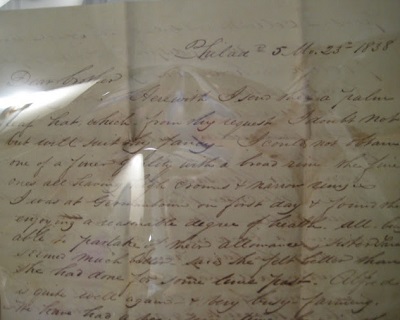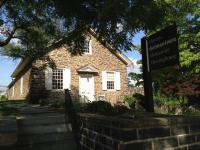Although it is now a neighborhood in the northwest part of Philadelphia, Germantown was founded by German Quaker and Mennonite families in the 17th century as an independent community. It was the first permanent Mennonite settlement established in this part of the world. In 1708, the Mennonites built the first Mennonite Meetinghouse in America along what would become Germantown Avenue. This meetinghouse is no longer standing, but the Mennonites built a “new” meetinghouse on the same spot in 1770.
By 1947, the Germantown Mennonite Church had a dwindling population and its members began to worry about what might happen to the historic meetinghouse, especially in regard to its future ownership, if the congregation no longer existed. That year, the Germantown Mennonite Church Corporation (now the Germantown Mennonite Historic Trust) was established with the purpose of preserving the Germantown Mennonite Meeting House and its burial grounds. Today, preserving the meetinghouse is still the primary purpose of the Germantown Mennonite Historic Trust, but the Trust also offers tours, creates exhibits, and works with other community organizations to shares the history and experience of Mennonites in Germantown from their initial settlement in the area to the present.

Drawing of the burial grounds at the Germantown Mennonite Meetinghouse showing the various plots

Detail image of the burial ground drawing
The Germantown Mennonite Historic Trust also cares for about 80 linear feet of archival materials, located in the Fretz Center, next door to the 1770 meetinghouse. Almost all of the Trust’s archival collection consists of its own records, which date primarily from the mid- to late 20thcentury, but there is also a small collection of materials from the Woman’s Club of Germantown, which was in existence from 1917 until the early 1980s.
When the Woman’s Club was established, its members wanted a place to serve as its headquarters and subsequently purchased an 18th century home in Germantown from members of the Johnson family, which is today known as the Johnson House. In 1980, when the Woman’s Club of Germantown was in the process of disbanding, it gave the house it used as its headquarters to the Germantown Mennonite Historic Trust for the price of one silver dollar. (The same silver dollar is now among the artifacts stored at the Fretz Center!) In 2002, the Trust transferred ownership of the Johnson House to the Johnson House Historic Site, a corporation that had been formed in the mid-1990s to take over the administration of the Johnson House, which had served as a stop on the Underground Railroad in the years leading up to the Civil War. Among the Woman’s Club of Germantown materials available at the Fretz Center are scrapbooks, administrative and financial records, membership materials, annual reports, documents relating to the transfer of the property from the Woman’s Club to the Trust, and other materials.

A score-keeping book for bridge games played by the Woman's Club of Germantown, 1977-1978
A very small amount of papers from the Johnson family, primarily letters from the 1820s to the 1870s, can also be found at the Fretz Center. Pictured below is a letter written by a sibling on May 23, 1838 to Ellwood Johnson while he was at “West Town B[oarding] School”, today known as Westtown School, in West Chester, PA.


"Dear Brother, Herewith I send thee a palm leaf hat…I could not obtain one of a fine quality with a broad rim. The fine ones all having high crowns and narrow rims..."
Hopefully Ellwood was not too disappointed that he didn’t get a broad rimmed hat!
If you are interested in reading more letters from various Johnson family members, or looking for research materials on Mennonite history or the other sites with which the Trust was once associated (e.g. the Johnson House Historic Site or RittenhouseTown Historic District) visit the friendly members of the Germantown Mennonite Historic Trust at the Fretz Center and see what you can find!

